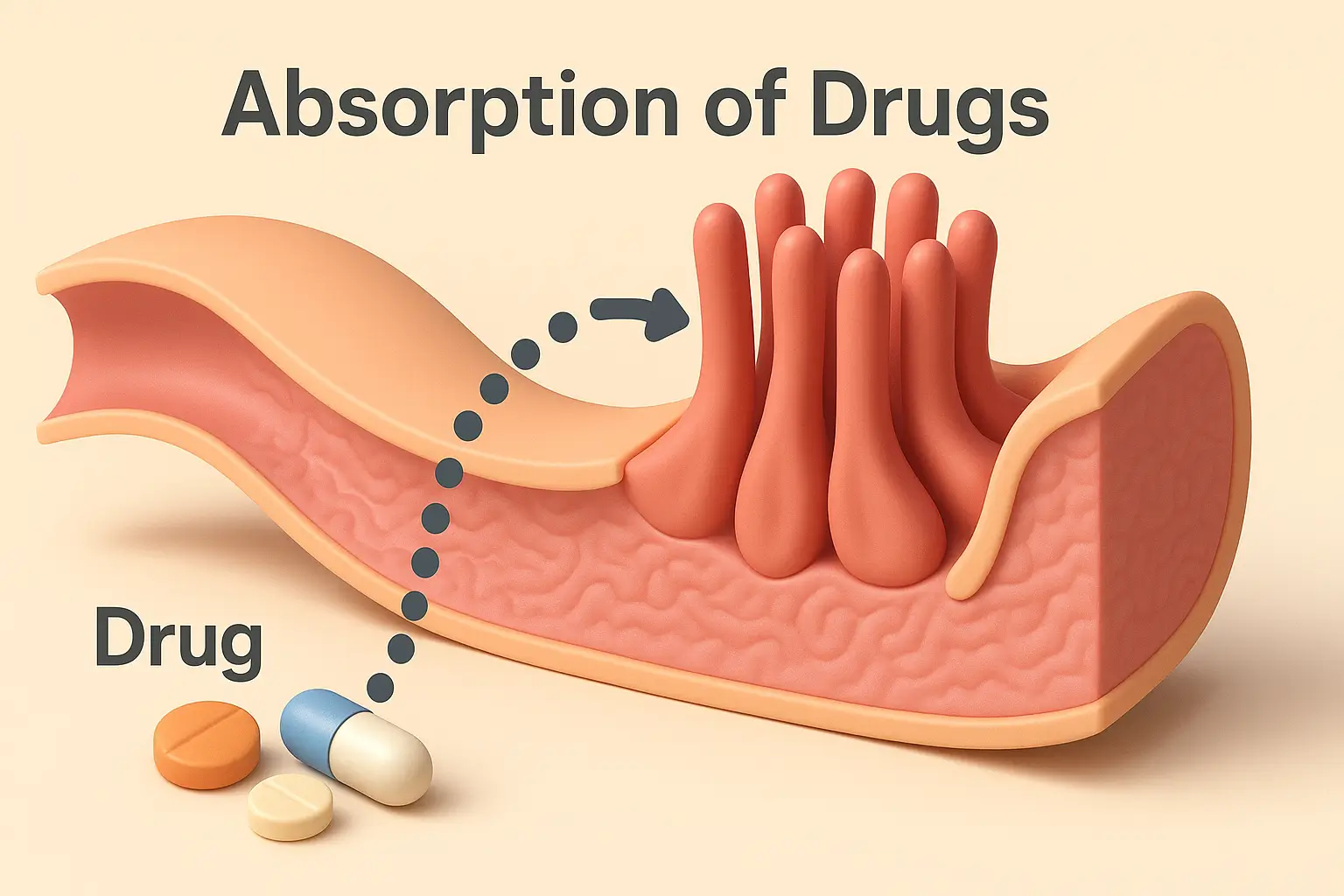Absorption of Drugs refers to the process by which a drug enters the bloodstream from its site of administration.

Factors Affecting Absorption:
- Route of Administration: Oral, IV, IM, subcutaneous, transdermal, inhalational, etc.
- IV route bypasses absorption as the drug is delivered directly into the bloodstream.
- Physicochemical Properties of the Drug:
- Solubility (lipid vs. water solubility)
- Stability in gastric pH
- Molecular size
- Formulation Factors: Tablet vs. capsule, coatings, sustained-release formulations, etc.
- Blood Flow at the Site of Administration: Better blood flow → better absorption (e.g., deltoid muscle has faster absorption than gluteal).
- Surface Area: Larger surface area (e.g., small intestine) generally leads to higher absorption.
- pH and Ionization: Drugs are better absorbed in the part of the GI tract where they remain unionized. For instance, weak acids (like aspirin) are better absorbed in the more acidic stomach environment, though the majority of drug absorption still occurs in the small intestine due to its huge surface area.
- First-Pass Effect (Hepatic Metabolism): Some drugs are significantly metabolized in the liver (and/or gut wall) before reaching systemic circulation. This reduces bioavailability.
Bioavailability
- The fraction (percentage) of a dose that reaches systemic circulation in its active form.
- For IV drugs, bioavailability is 100
- For oral drugs, it can vary significantly depending on first-pass metabolism, solubility, stability in GI fluids, and more.

